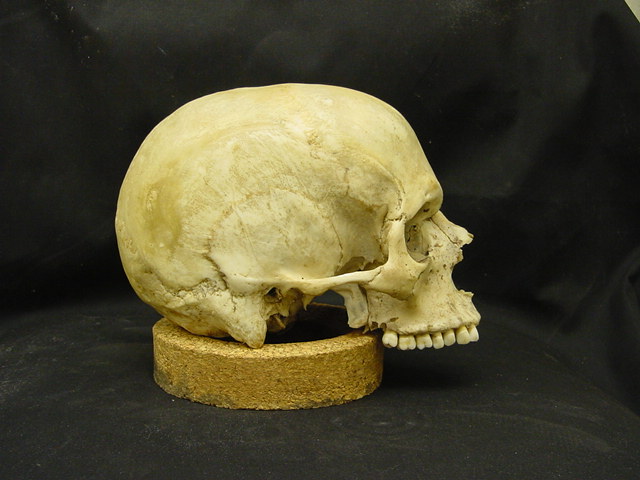
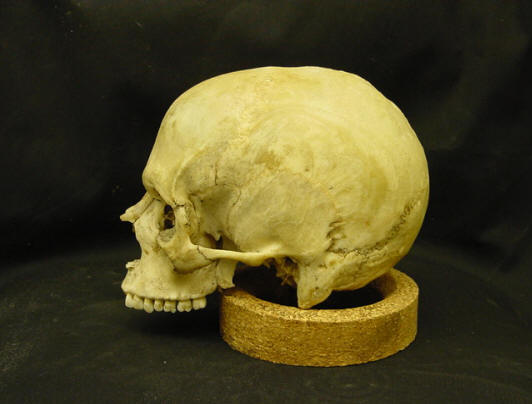
What
is Forensic Osteology?
The
simplest definition of Forensic Osteology is that it is the application of
the study of bones (osteology) to the field of forensic science. Whereas a
Medical Examiner (aka - ME, and usually a trained forensic pathologist) is experienced in dealing with bodies that still retain soft
tissues, the field of forensic osteology deals almost exclusively with
skeletal material, and the manner in which the skeletonization occurred.
On a comparative note - Forensic Anthropology adds to the field of osteology by combining
archaeological field techniques with the area of skeletal anatomy. A
more detailed description of forensic anthropology can be seen at the
website for the American Board of Forensic Anthropology.
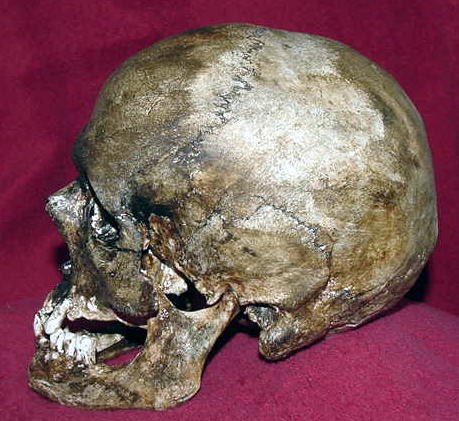
.JPG) France Casting
France Casting
Anatomical background
For the 2-day Forensic Osteology workshops, it is assumed that all
participants will have a fundamental understanding and working knowledge
of human anatomy, especially skeletal anatomy, i.e., you should be able to
at least identify all of the major bones and landmarks of the human
skeleton. The structure list for 2-day workshops can be accessed by clicking the
following link: Osteology List
For those not possessing such a
background - all is not lost. Some excellent anatomy sites are
located at the following URLs:
http://www.eskeletons.org/
http://www.getbodysmart.com/ap/skeletalsystem/skeleton/menu/animation.html
http://www.accessexcellence.org/RC/VL/xrays/
http://www.bio.psu.edu/people/faculty/strauss/anatomy/skel/skeletal.htm
A few hours time at the above sites
should bring most of the non-anatomists "up to speed" as far as the anatomy
and terminology are concerned.
The following texts are quite useful
for reference:
Human Osteology, by
William M. Bass (ISBN: 0-943414-81-4)
The Human Bone Manual,
by Tim D. White & Pieter A Folkens (ISBN: 0-12-088467-4)
Introduction to Forensic
Anthropology - A Textbook, by Steven N. Byers (ISBN:
0-205-43538-6)
Forensic Osteology - Advances in
the Identification of Human Remains, (2nd ed.) edited by Kathleen J.
Reichs
(ISBN: 0-398-06804-6)
Additional/alternative workshops
As previously mentioned, this is a
course designed for those needing introductory-level exposure to forensic
osteology. Those already possessing a significant
working knowledge of forensic science and forensic osteology/anthropology would be best served by taking one of the more in-depth
forensic anthropology "short courses" offered at various colleges and universities
around the country.
I can highly recommend
any of the NSF-sponsored Chautauqua short courses, as well as any of the
summer short courses offered through the
Mercyhurst Archaeological Institute at Mercyhurst College, Erie, PA.
The facilities and the faculty are some of the best you will ever encounter!
Please note that Mercyhurst also offers a Master of Science degree in
Forensic and Biological Anthropology. Baccalaureate students
considering an MS degree in the field of forensic anthropology, or a related
area, should certainly investigate the program at Mercyhurst.
Additional workshops are offered
through
the
Anthropology Department at the University
of Tennessee - Knoxville, and these often include time spent at the "Body
Farm" (Anthropology Research Facility). The faculty & staff at UT-K
are absolutely stellar!
I have also attended the AFIP/NTSB short course, and it is well worth
attending as well!. (Armed Forces Institute of Pathology) While it
does not go into the depth that the Mercyhurst or UT-K workshops do, it
provides an excellent introduction into all aspects of forensic anthropology.
A logical plan would be to attend the AFIP course one year, followed by some
of the Mercyhurst and/or UT-K courses each of the following Summers.
The
Forensics Lab
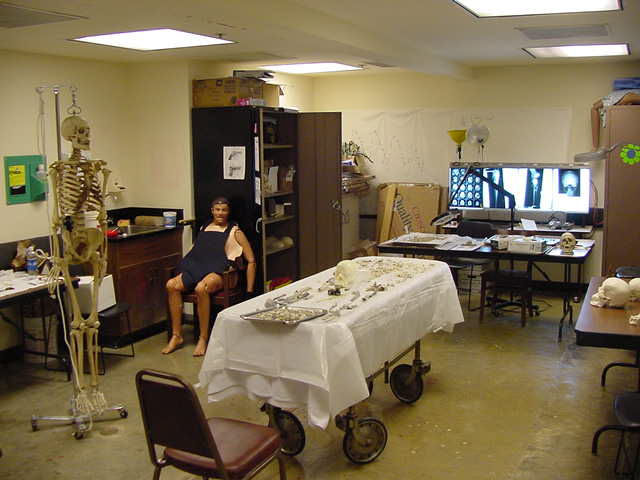
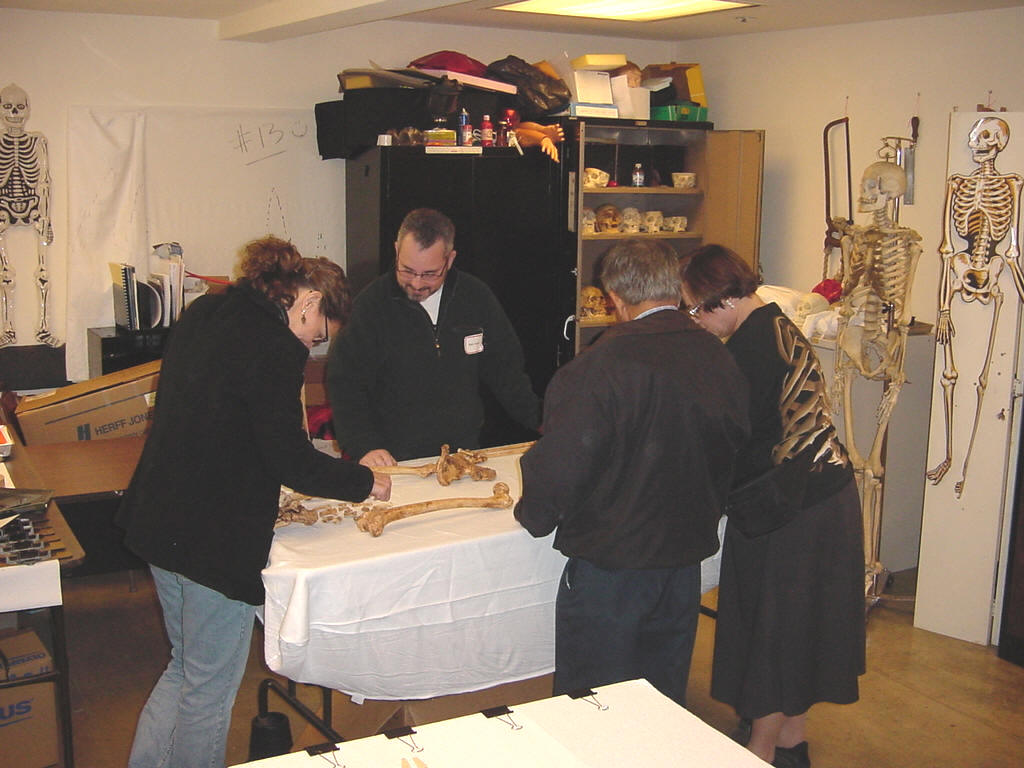
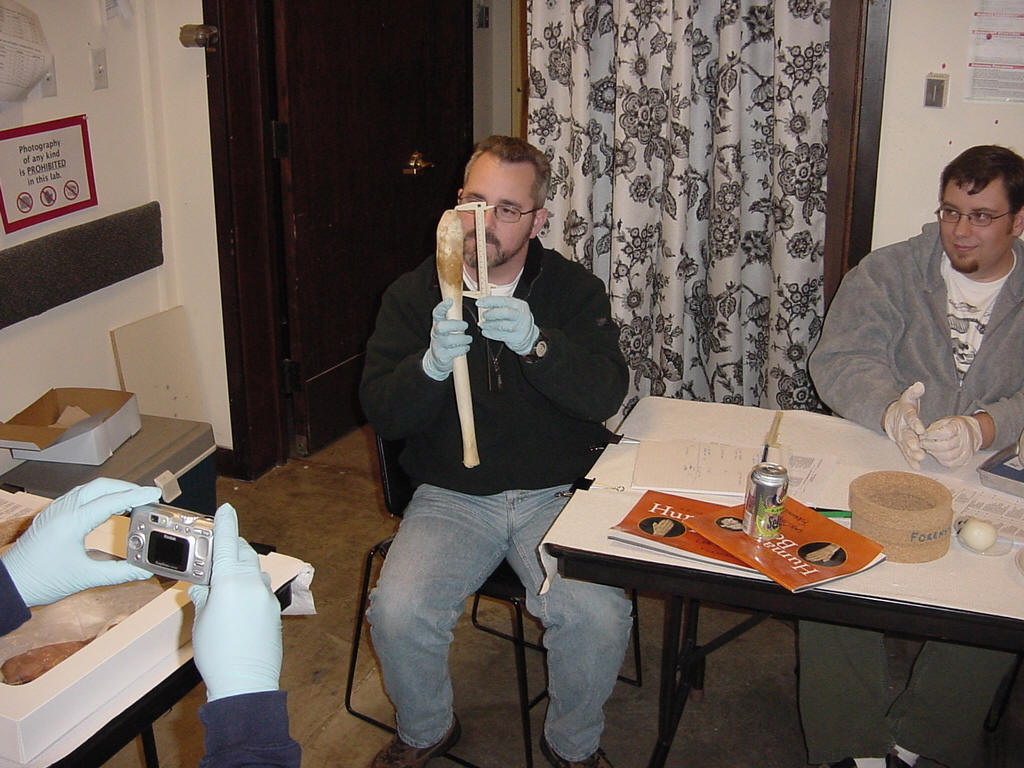
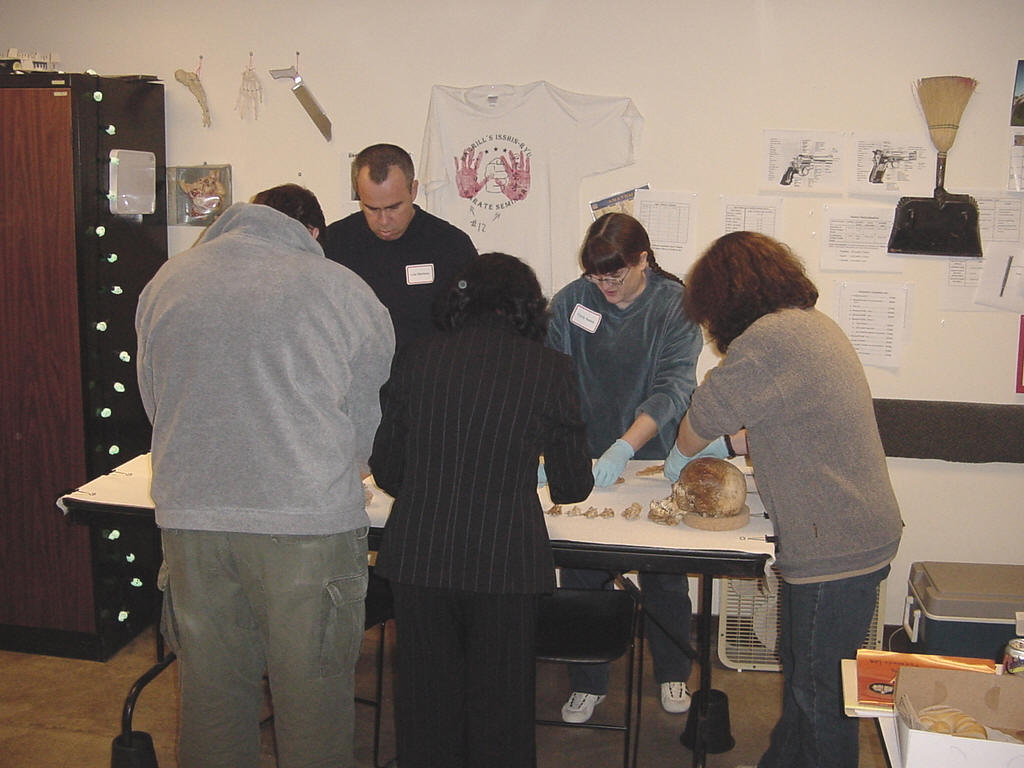
It's
small, it's stark, and it is always cluttered with bones!
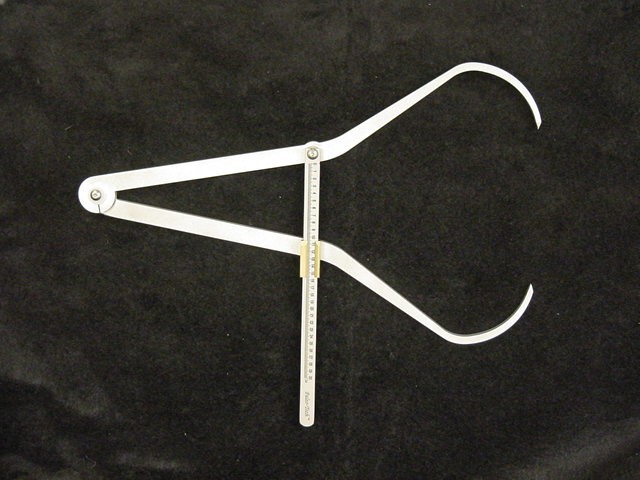
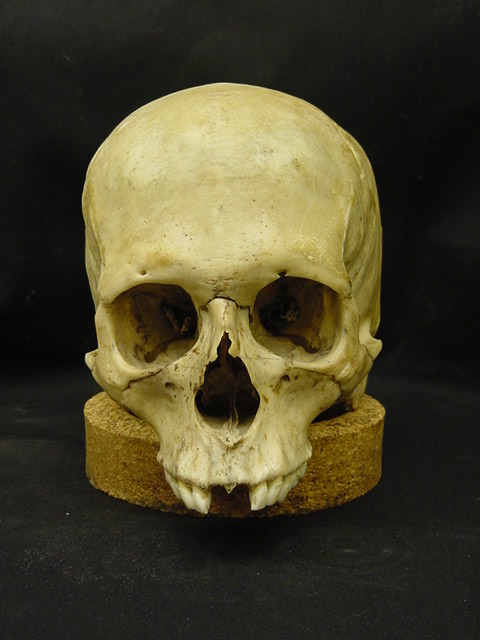
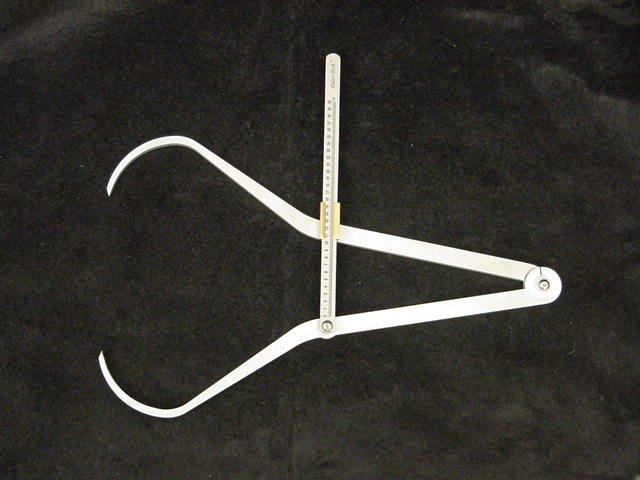
TENTATIVE TOPICS FOR 2-DAY WORKSHOP
Link to Announcement
Page - for participants who have already registered.
While the main thrust of the workshop
is Forensic Osteology, several other relevant areas will be touched on in the 2-day workshops. A significant
number of the specimens used for the hands-on lab sessions will be real
human bones. The remainder are high quality replica castings.
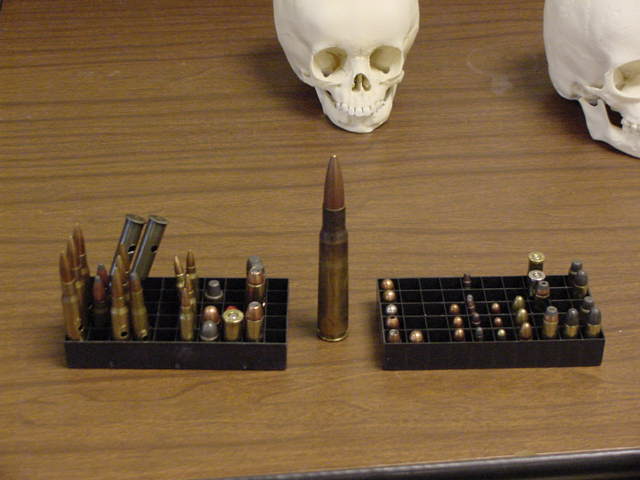
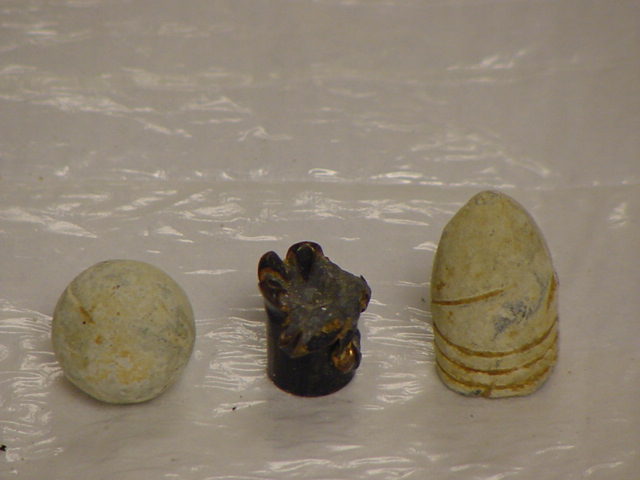
Basic Taphonomy (lecture) - Taphonomy deals with the various
processes that lead to the skeletonization of a body. This portion of the
workshop will include discussions of post-mortem changes, mummification,
submerged & buried bodies, contemporary vs archaeological
specimens, and environmental factors influencing skeletonization.
Ballistic & Sharp Trauma (lecture with hands-on lab session) - In
this part of the workshop, participants will be exposed to the physical
aspects of ballistic and sharp trauma of bone. The concept of sawmark identification will
also be covered.
PMI/TOD (lecture) - Estimation of Post Mortem Interval and Time
of Death.
Skeletal Inventory(lecture & lab) - Determining the
number and condition of bones found at a forensic scene.
MNI (lecture with hands-on lab session*) - Determination of
Minimum Number of Individuals in cases involving multiple decedents.
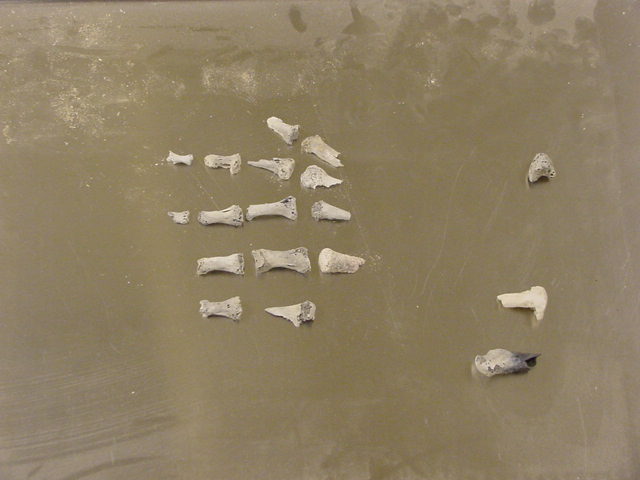
Reconstruction of a human hand recovered from fire.
Identification of human skeletal remains/Biological
Profile - (lecture & lab).
Determination of class characteristics, i.e., sex, stature, age, and
race/ancestry. Human vs non-human remains. Introductory forensic odontology.
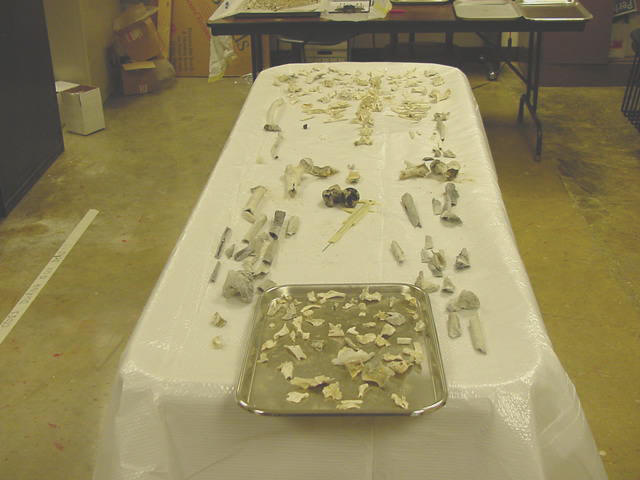
Inventory & Identification of calcined human bone from fire.
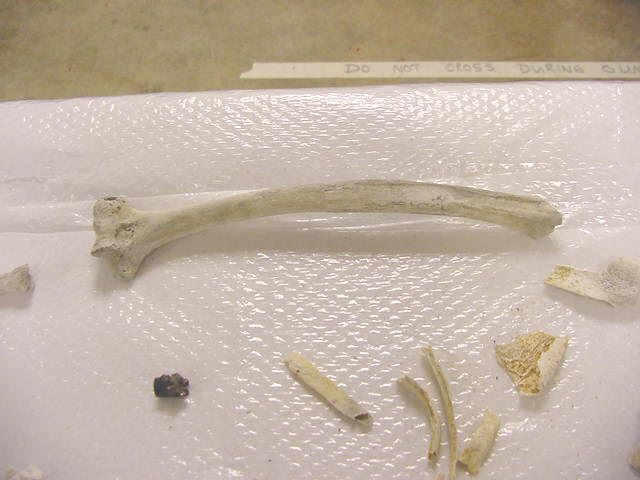
Bone
warpage due to exposure to elevated temperature.
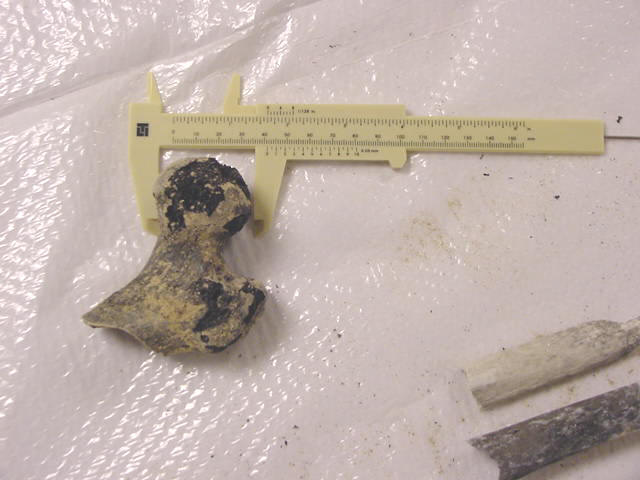
Burned human femur fragment.

Human
prostheses - post fire.
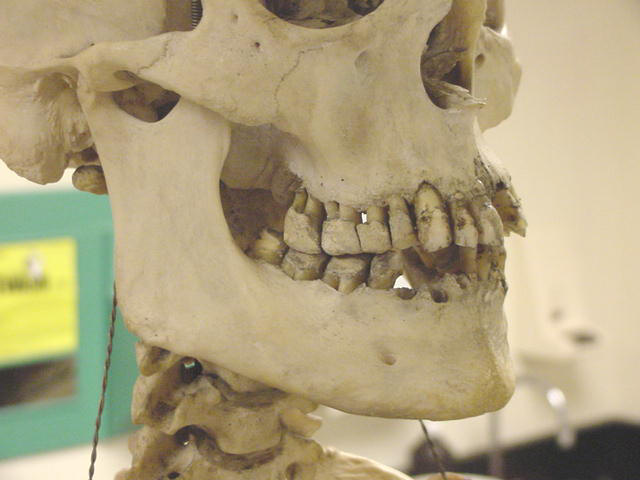
Odontology component includes tooth identification, age & racial
differences,
as well as postmortem vs. premortem tooth loss.
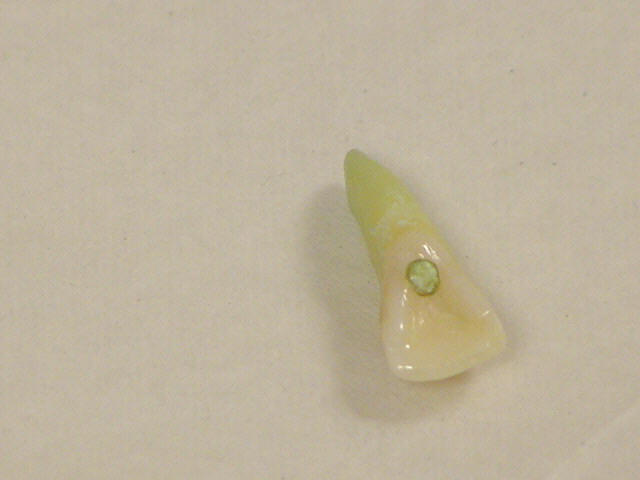
What can this tooth tell us about the original owner???
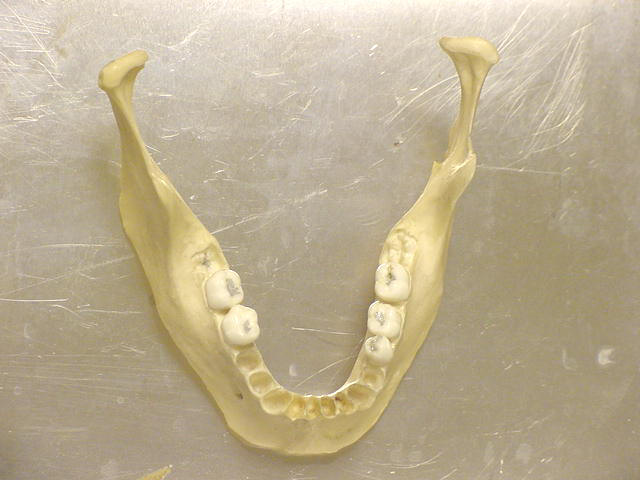
What
can be determined from this specimen?
Age,
sex, pre vs. postmortem tooth loss?
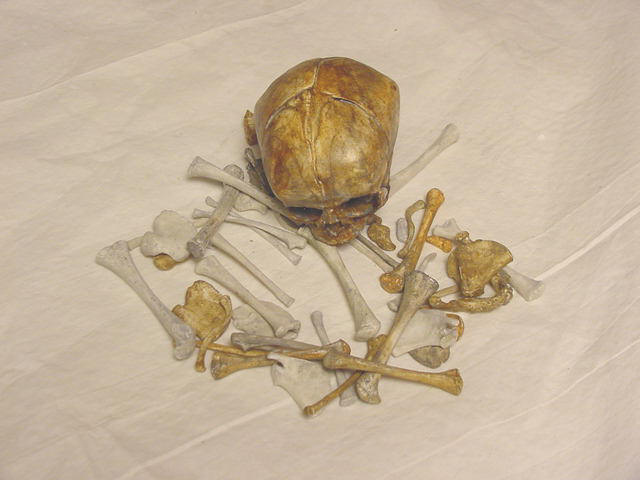 France
Casting
France
Casting
Fetal skeletal inventory
& MNI determination lab
(before I & R)
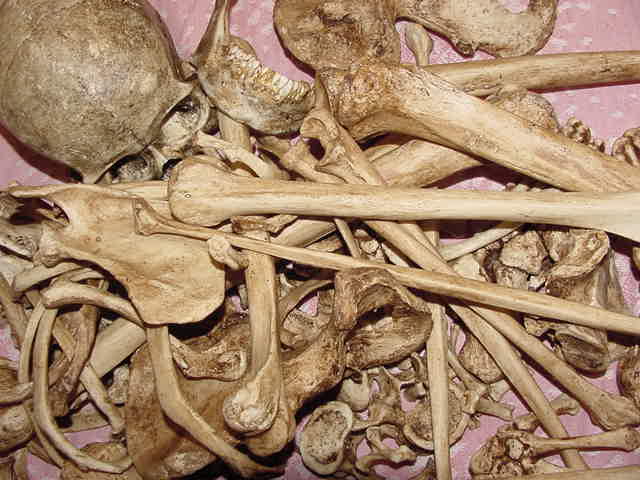
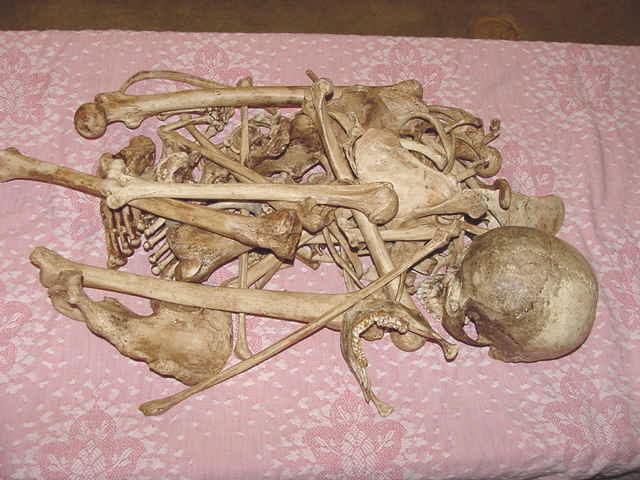
Bone Clones
Adult skeletal inventory
& MNI determination lab
(before I & R)
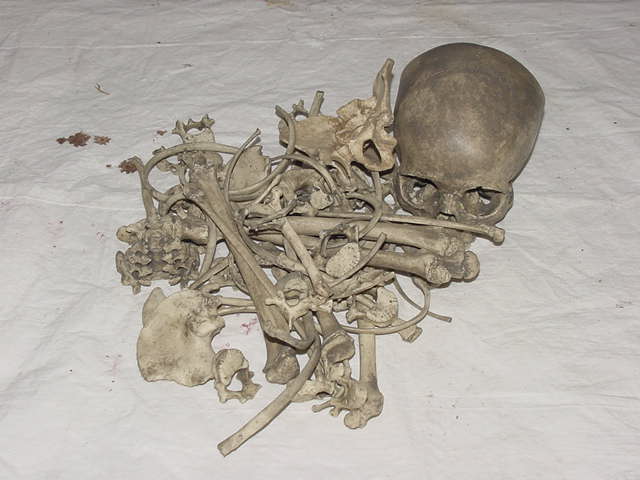 Bone Clones
Bone Clones
Sub-adult skeletal
inventory & MNI determination lab
(before I & R)
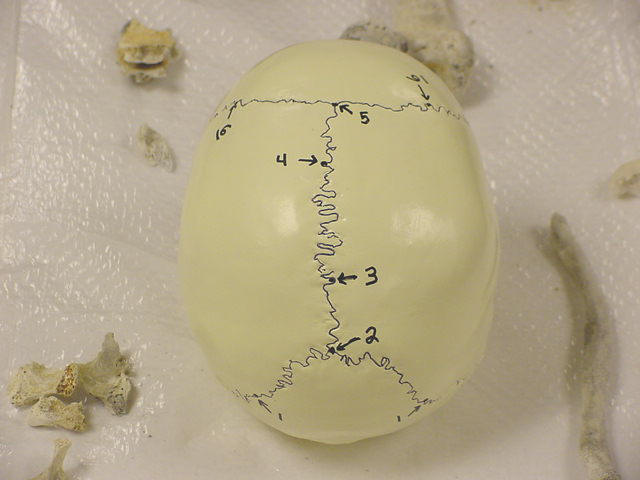
Exemplar skull showing data points used to estimate age at time of
death.
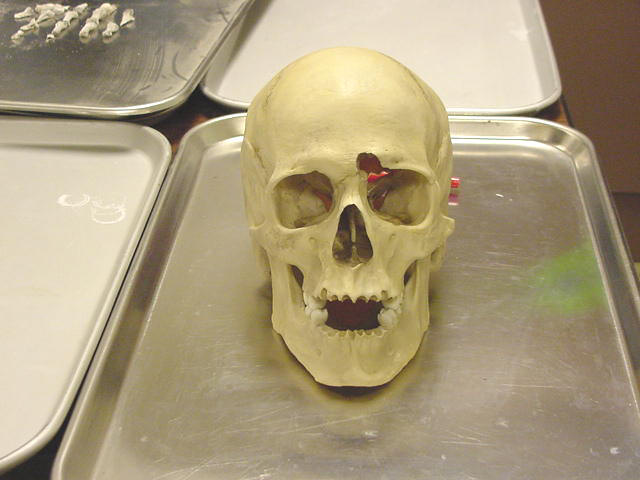 Bone Clones
Bone Clones
Entrance wound on GSW- TT (gunshot wound - through and through)
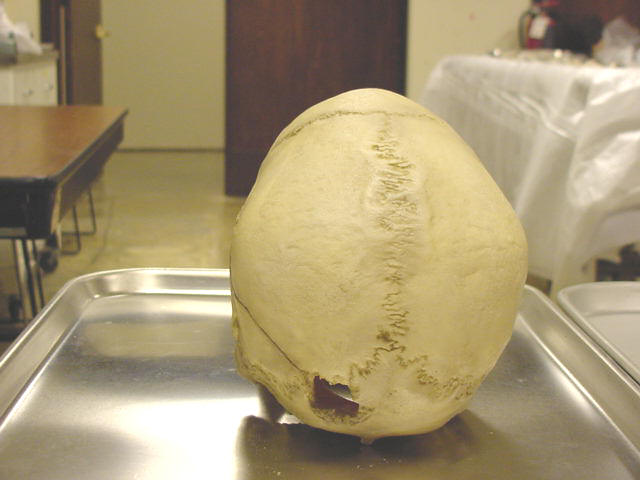 Bone Clones
Bone Clones
Exit
GSW - same skull as previous image
Identification labs and Case Studies - ID
labs will make up a significant portion of Day 2. These labs and case studies
will involve determining sex, age, race, and stature, of selected specimens.
Assessment of skeletal trauma will also be covered.
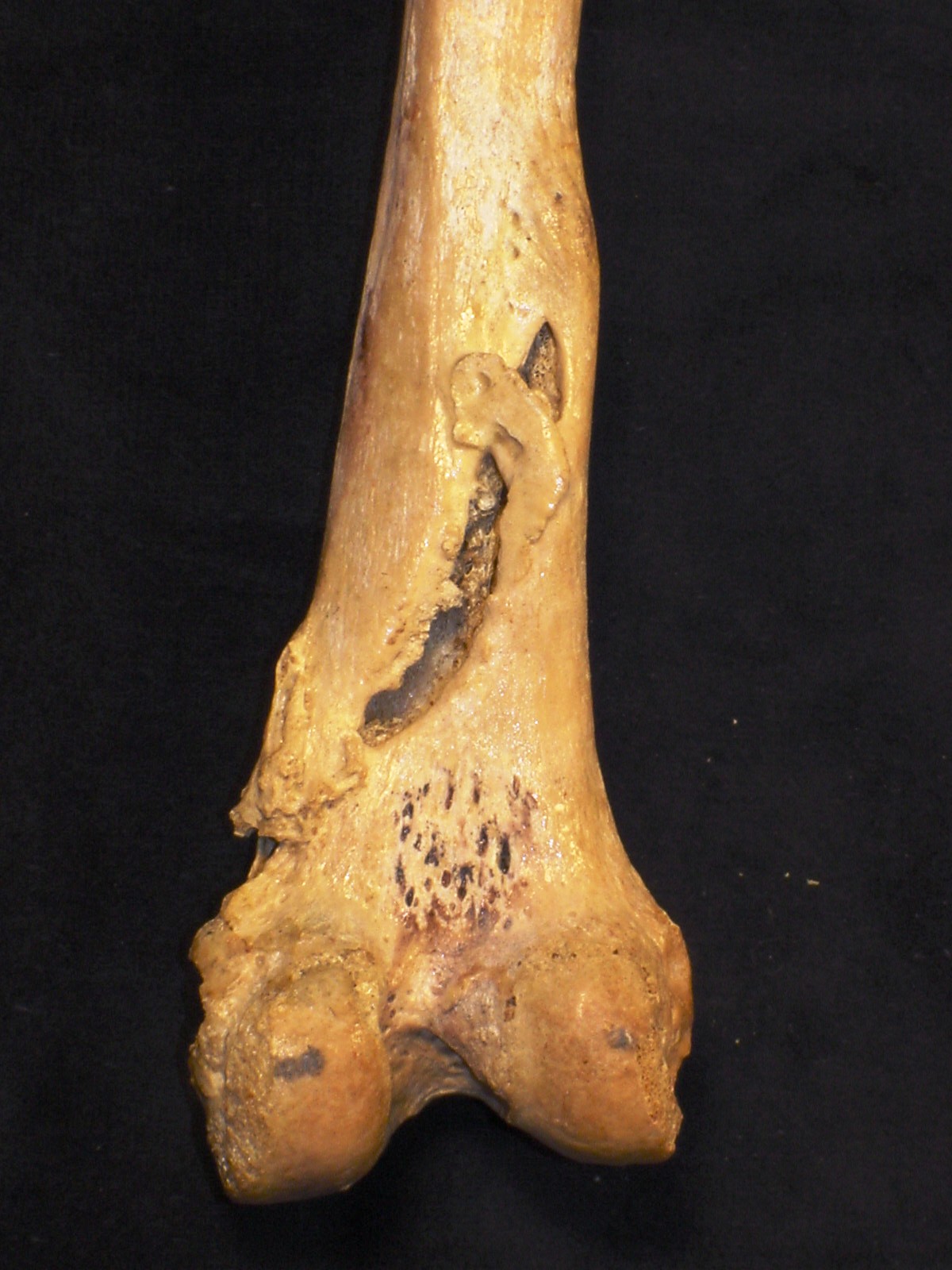
Distal femur - healed fracture.
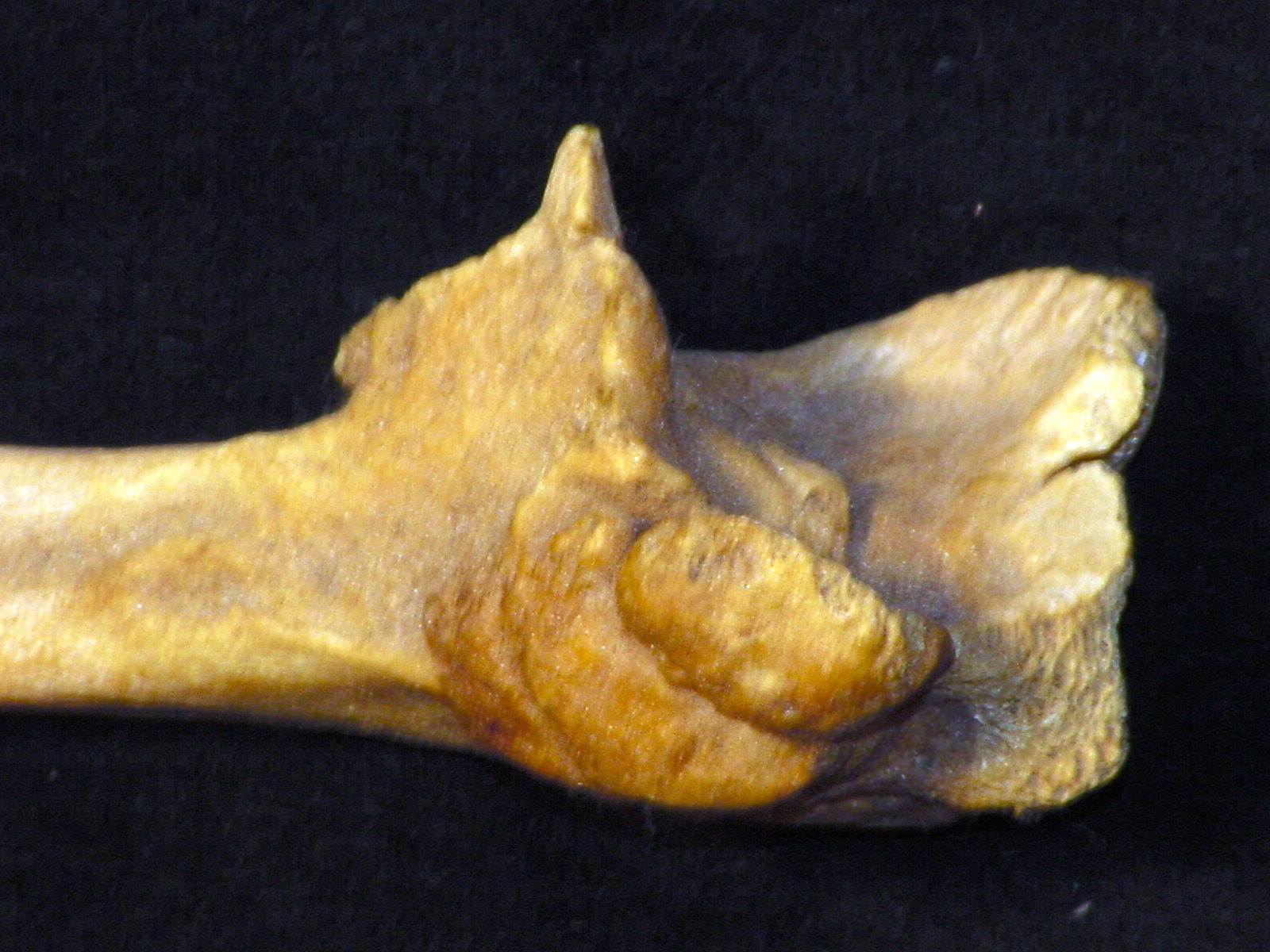
Proximal ulna
- excess bone callus secondary to trauma or disease
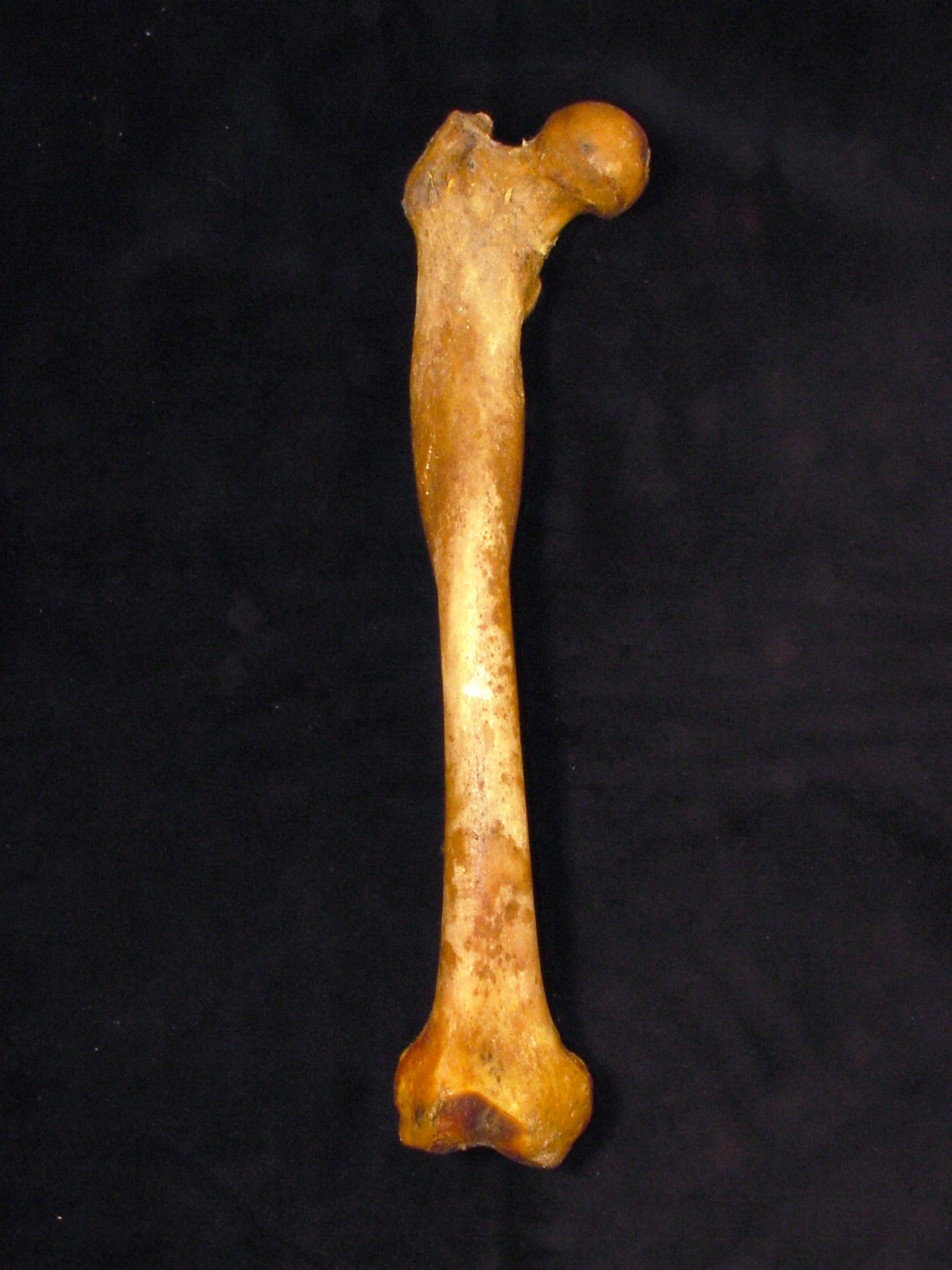
An atypical femur
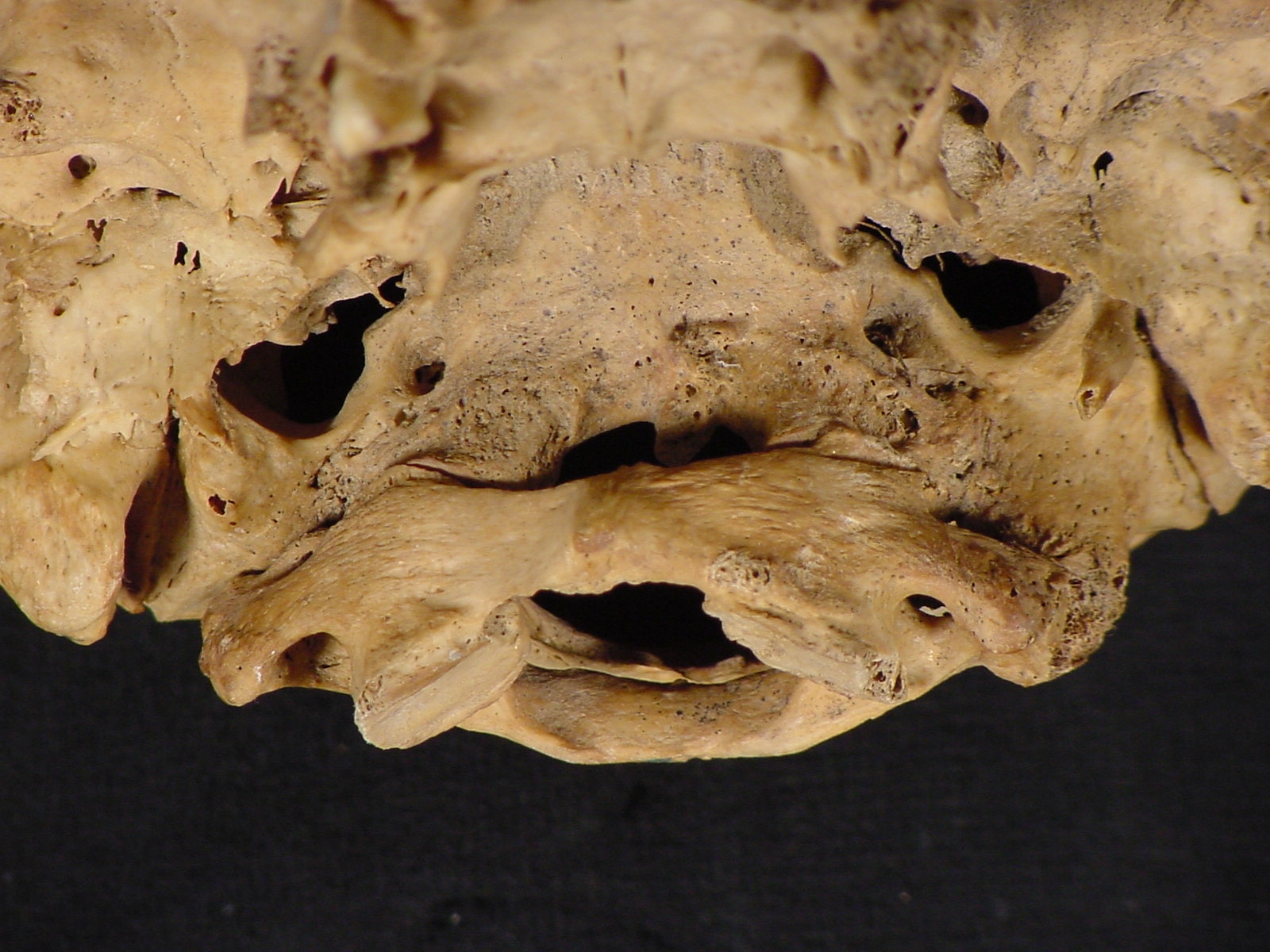
Atlanto-occipital fusion
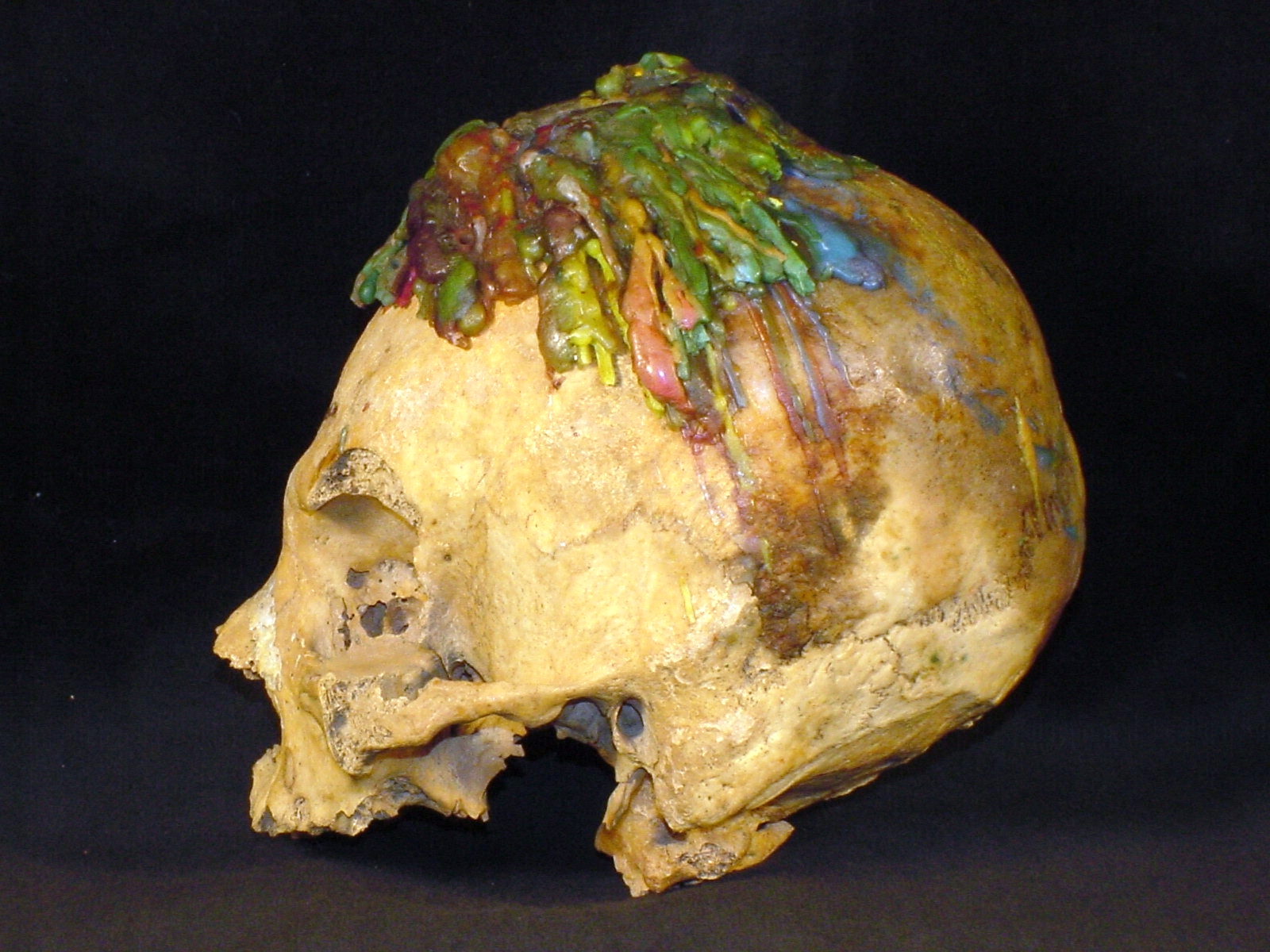
This "trophy skull" specimen was found in a
dumpster behind an abandoned store.
We often use it as one of the Case
Studies for the workshop.
Preparation of teaching specimens (lecture & demo.
Presented only for those workshops where all participants are educators.) - This final
portion of the course involves an introduction to the hows & whys of
obtaining specimens, as well as altering replica specimens and animal bones so as
to make them appear as authentic forensic specimens. Suggestions for
hands-on labs will also be provided, e.g., a forensic exhumation lab.
Finally - we will have a discussion for those who are interested in starting
a forensic science course at their school.
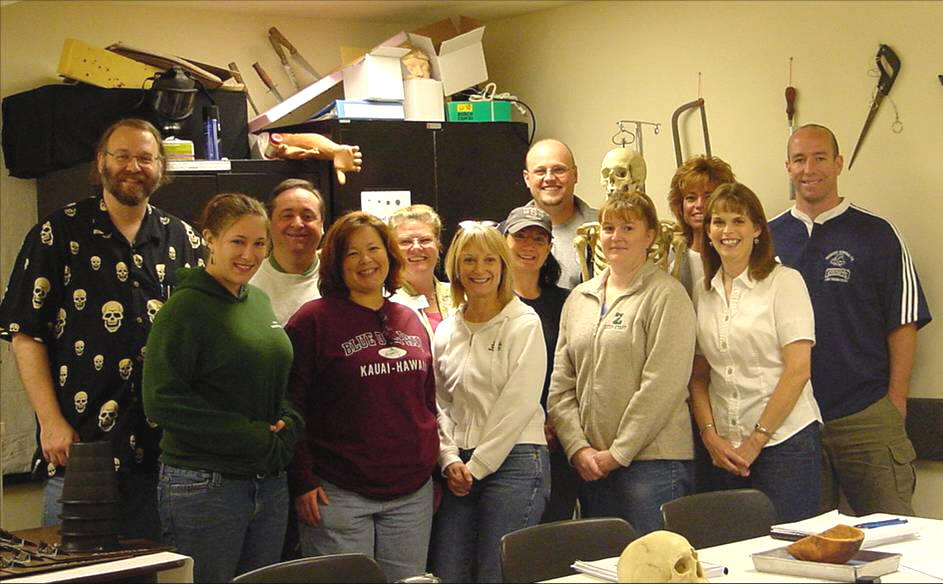
Participants of June 2006 Workshop

Participants of November 2006 Workshop
Instructor Profile
- john moore -
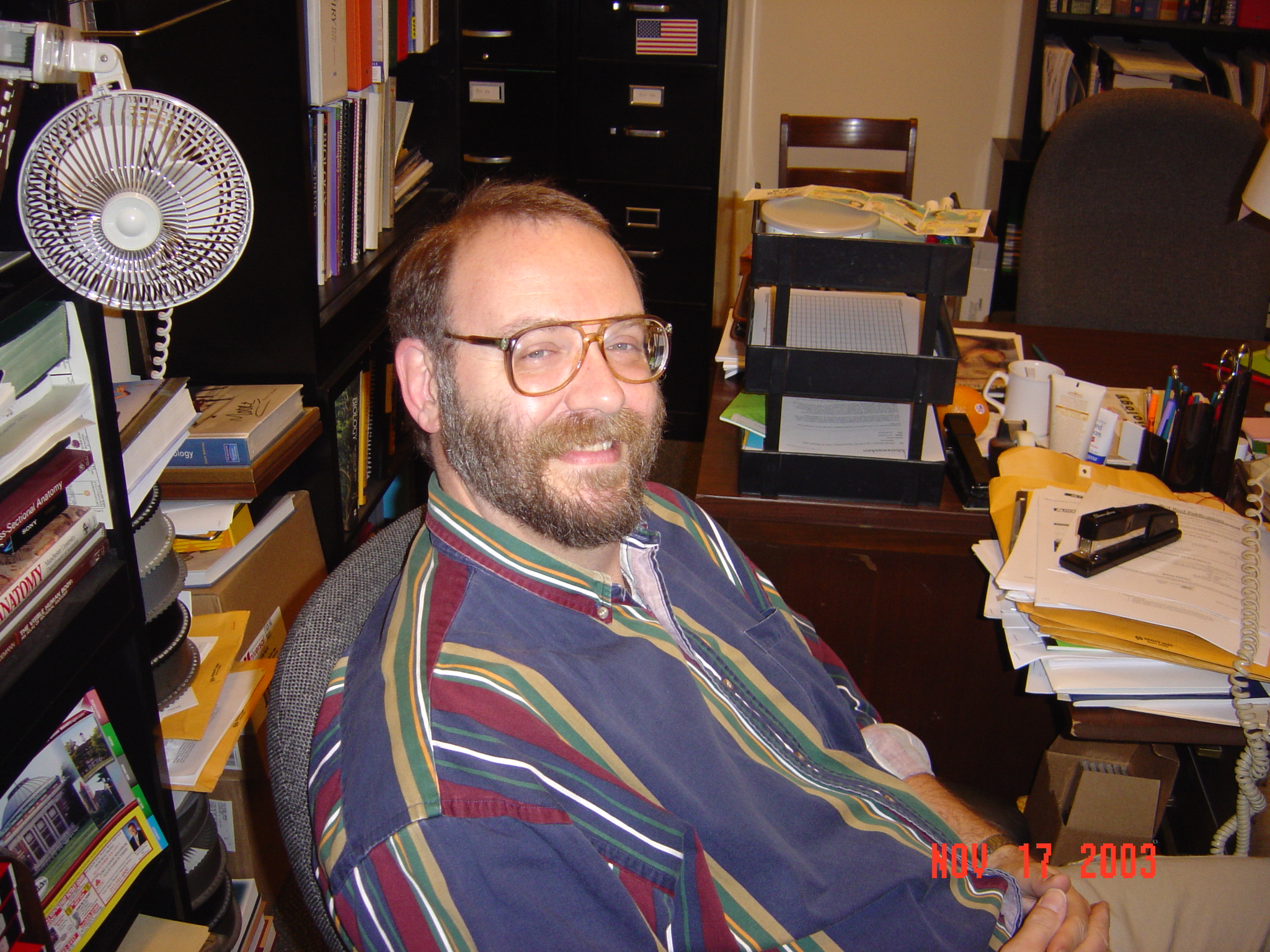
.JPG)
(above left) This is the only living specimen you will see during the workshops.
Old enough to be classified as
archaeological - at least from a forensic point of view!!!!!
(above right) - John
with Dr. William Bass
Personal Webpage Link
Link to
Parkland Natural Sciences Department
Link to Announcement
Page - for participants who have already registered.
John Moore is a professor at Parkland
College, where he has taught for the past 30 years. Prior to coming to
Parkland, he held the position of Visiting Lecturer in Anatomy
at the University of Illinois, School of Basic Medical Sciences. In addition to teaching Anatomy & Physiology, Pathophysiology, and
Cross-Sectional Anatomy at Parkland, he is part of a team of cross-disciplinary instructors teaching the
introductory forensics course, Essentials of Forensic Science, and is the lead instructor for the second
semester course - Forensic Science II: Death Analysis. Topics
covered in these courses include - bloodstain pattern analysis, forensic
osteology & anthropology, ballistics, pathology, explosives, trauma &
radiological interpretation, and mass disaster investigation.
As a child, John's parents noted that his
two favorite presents were his microscope (received for his 5th birthday!), and
his Daisy BB gun (received Christmas of the year he turned 10). It seems
only fitting that he grew up to have an interest in forensics. In 1973,
long before the current forensics fad on television, John entered the field of
forensics by becoming a consultant for the Grand Rapids Police Department Crime
Lab. Most of his case load was in the area currently known as trace
evidence, and most of his active cases were homicides. Every June
John presents a two-day short-course in Forensic Osteology at Parkland College,
as well as several one-day "educators only" lab
workshops throughout the academic year.
John's forensic training includes the following:
NSF/Chautauqua coursework:
Forensic Anthropology
Bloodstain Pattern Analysis
Mercyhurst College -
Mercyhurst Archaeological Institute:
Skeletal ID
Taphonomy
Trauma & Pseudo-Trauma
Armed Forces Institute of Pathology/NTSB - Forensic Anthropology:
Skeletal ID
Taphonomy, Odontology, Trauma
University of Tennessee - Knoxville
(Forensic Anthropology/the "Body Farm"):
Human skeletal ID
Taphonomy
In addition to the above, John also
possesses an
extensive background in both martial arts and tactical firearms. He holds
the rank of Go Dan (5th degree blackbelt) in Isshin Ryu karate, and is a
multiple graduate of one of the top firearms training facilities in the nation,
Gunsite Academy.
(In addition to training selected civilians, Gunsite is best known as one of the primary advanced training facilities for
agents or officers from the FBI, ATF, CIA, DEA, Navy SEALS, USMC Force Recon, US
Border Patrol, and Federal Air Marshalls.)
And yes, if you haven't already figured it
out by clicking on the link to his
Personal Webpage,
John loves his 6 French Bulldogs and his one Maltese.
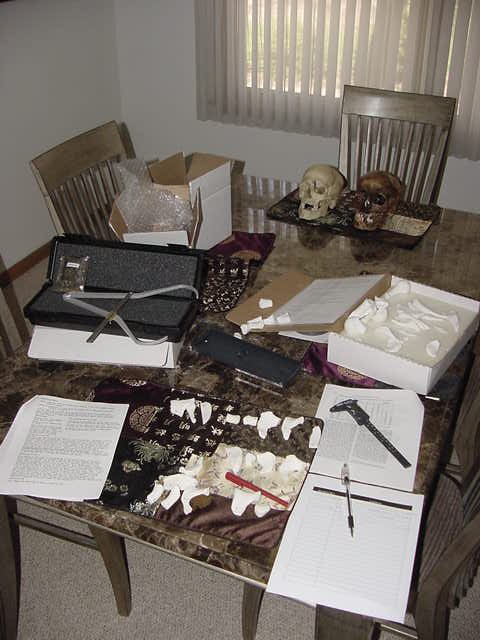
The reason John never eats at the
dining room table at home - at least not often!
____________________________________________________
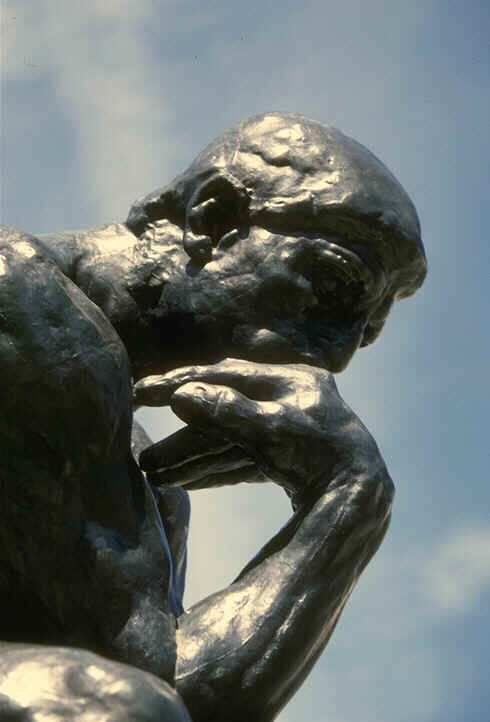
"All too often,
information flows from the notes of the professor,
into the notebooks of
the students -
without passing through
the minds of either! "
The above statement was made to
our SIU Biophysics class by Professor Al Richardson in 1974. I wrote it
down at the time and, needless to say, it has stuck in my mind for the past 30
years. Each day I step into a classroom, I strive to ensure that it does
not apply to me, or to my students. - jm
PHOTO GALLERY
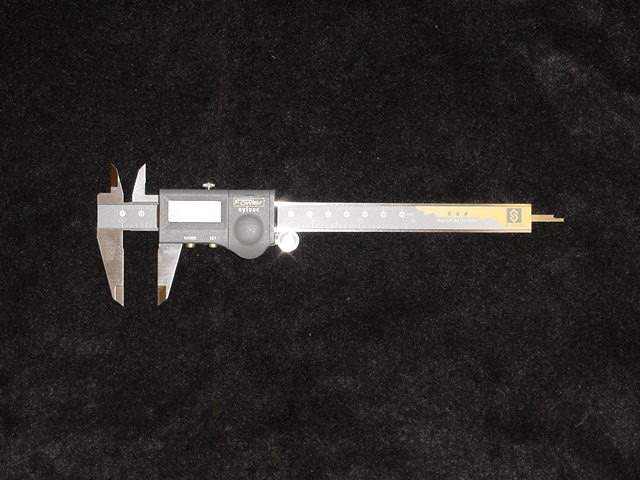

Tanceant colloquia. Effugiat
risus.
Hic locus est ubi mors gaudet
succurrere vitae.
(Let conversation cease. Let laughter flee. This
is the place where death delights to help the living.)









_small.JPG)




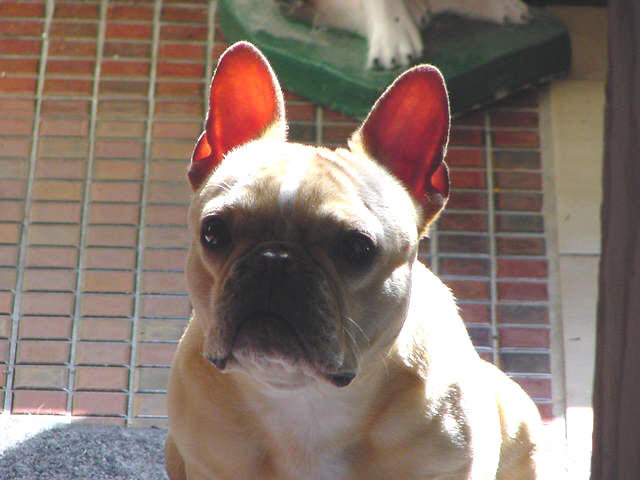
My name is
Bella, and I am one of the 7 dogs and 20+ birds that live with John and Andrea -
his veterinarian/wife!
Now you know how
he gets the bone specimens with "gnaw marks" on them!


THE END

Link to Announcement
Page - for participants who have already registered.









